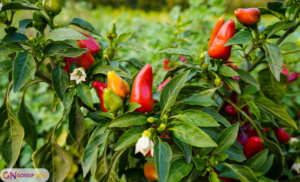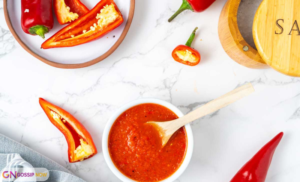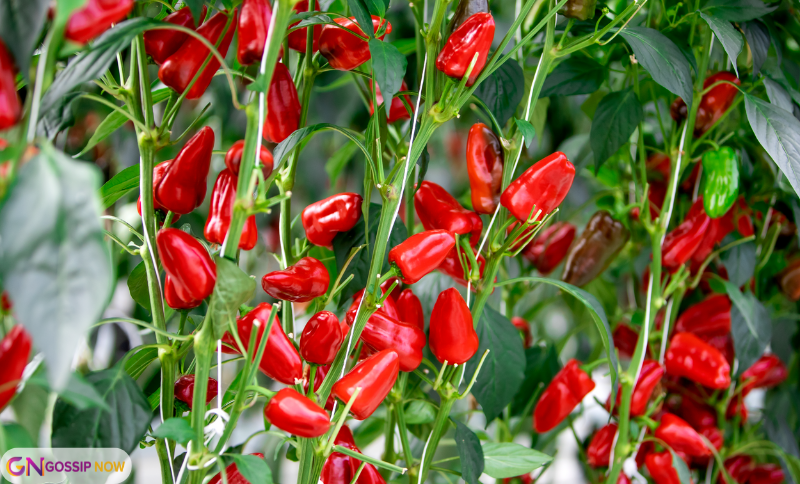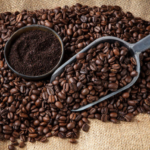When it comes to chili peppers, some bring heat, others bring flavor — but the fresno pepper brings both. Tucked between mild jalapeños and hot serranos, fresno_peppers offer just the right amount of heat with a bright, fruity kick. These glossy red gems not only spice up dishes but also turn heads in gardens and kitchens alike.
Whether you’re a home cook, a hot sauce lover, or a gardening enthusiast, understanding the fresno pepper can help you elevate your culinary game. From the Scoville rating to the best ways to grow and cook them, this guide covers everything you need to know — and a bit more.
What Is a Fresno Pepper?
 The fresno_pepper is a type of chili pepper developed in California in 1952 by Clarence Brown Hamlin. Named after Fresno, California, this pepper resembles a jalapeño in appearance but offers a more nuanced flavor and aroma. It starts green and ripens to a brilliant red color, developing more sweetness and complexity as it matures.
The fresno_pepper is a type of chili pepper developed in California in 1952 by Clarence Brown Hamlin. Named after Fresno, California, this pepper resembles a jalapeño in appearance but offers a more nuanced flavor and aroma. It starts green and ripens to a brilliant red color, developing more sweetness and complexity as it matures.
Fresno Pepper Scoville: How Hot Is It?
Understanding the Spice Level
The fresno pepper Scoville rating falls between 5,000 and 10,000 Scoville Heat Units (SHU). This range places it slightly above a jalapeño on the heat scale but far below the blazing levels of habaneros or ghost peppers.
-
Green fresno peppers (unripe) tend to be milder.
-
Red fresno peppers (fully ripe) pack more heat and flavor.
While the heat is noticeable, it won’t overpower a dish, making it ideal for both heat lovers and those new to spicy foods.
Fresno Pepper vs Jalapeño: Key Differences
Though similar in size and shape, fresno_pepper vs jalapeño comparisons reveal important differences:
| Feature | Fresno Pepper | Jalapeño |
|---|---|---|
| Heat Level | 5,000–10,000 SHU | 2,500–8,000 SHU |
| Flavor | Fruity, smoky, sweet | Grassy, earthy |
| Ripens to | Bright red | Deep red (but often eaten green) |
| Wall Thickness | Thinner | Thicker |
| Cooking Use | Great for raw, pickled, or grilled | More common in stuffing or baking |
So, if you’re looking for a pepper with more personality, fresno often edges out jalapeños in both flavor and spice.
How to Use Fresno Peppers in Cooking
Fresno_peppers shine in the kitchen. Their vibrant color and flavor make them ideal for countless dishes:
🔥 Best Uses for Fresno Peppers:
-
Salsas and hot sauces: They blend smoothly with tomatoes, garlic, and citrus.
-
Pickling: Their thin skins make them perfect for quick pickles.
-
Grilling: Roasting enhances their smokiness and sweetness.
-
Garnishes: Adds heat and color on tacos, noodles, and rice bowls.
-
Stir-fry dishes: They play well with soy, vinegar, and ginger-based sauces.
Always slice with care and consider wearing gloves if you’re sensitive to chili oils.
Red Fresno Pepper: Ripened and Ready
As fresno_peppers mature, they turn from a waxy green to a stunning red — becoming red fresno_peppers. These mature versions are:
-
Hotter than green ones
-
Sweeter and fruitier
-
More flavorful when cooked or pickled
They’re especially popular in Latin American and Southeast Asian cuisine because of their bold color and balanced taste.
Fresno Pepper Substitute: What to Use When Unavailable
 Can’t find fresnos in your local store? No problem. There are great fresno_pepper substitutes that mimic the heat and flavor:
Can’t find fresnos in your local store? No problem. There are great fresno_pepper substitutes that mimic the heat and flavor:
-
Jalapeño: Milder and more common, great raw or cooked
-
Serrano: Slightly spicier, with a sharper flavor
-
Cayenne (fresh): Spicier but can be toned down
-
Thai chili: For heat lovers only – use sparingly
Keep in mind the flavor won’t be identical, but the dish will still shine.
Growing a Fresno Pepper Plant at Home
Want to take your pepper game to the next level? Grow your own fresno_pepper plant! They’re easy to cultivate with a bit of care.
🌱 Growing Tips:
-
Start indoors: Use seeds or starter plants 8–10 weeks before the last frost.
-
Soil: Well-drained, fertile soil is best.
-
Sunlight: 6–8 hours of full sun daily.
-
Watering: Keep soil consistently moist, but never soggy.
-
Harvest time: 75–90 days from transplanting
🌶️ Fresno Pepper Seeds: Where to Find Them
Fresno pepper seeds are widely available online and in gardening centers. Look for non-GMO heirloom varieties for the best results. Make sure they’re labeled specifically as Fresno chili to avoid confusion with similar peppers.
🌶️ Fresno Pepper Spice Level: A Balanced Kick
What makes the fresno special is its balanced spice level. Not too hot, not too mild — it hits the sweet spot for most spice lovers. Because of that, you can enjoy it in raw form without tears or in cooked form for a mild zing.
Nutritional Benefits of Fresno Peppers
Beyond flavor and fire, fresno_peppers pack nutritional value:
-
Rich in Vitamin C – Boosts immunity
-
High in Capsaicin – Natural anti-inflammatory compound
-
Low-Calorie – Great for healthy meals
-
Antioxidants – Promote heart health
Whether you’re adding them to salads or soups, they spice up your health as much as your food.
Bio Table
| Attribute | Details |
|---|---|
| Scoville Heat Units (SHU) | 5,000 – 10,000 SHU |
| Flavor Profile | Fruity, smoky, slightly sweet |
| Color When Ripe | Bright red |
| Best Uses | Salsas, pickling, grilling |
| Plant Height | 18–24 inches |
| Growing Time | 75–90 days from transplant |
| Heat vs. Jalapeño | Slightly hotter |
| Common Substitutes | Jalapeño, serrano, cayenne |
| Ideal Soil pH | 6.0–6.8 |
| Origin | California, USA |
| Availability | Spring to Fall |
| Harvest Time | When fully red |
| Sunlight Requirement | 6–8 hours daily |
Conclusion
The fresno_pepper is more than just a pretty red chili. It’s a flavorful, versatile, and easy-to-grow pepper with the perfect amount of heat. Whether you’re tossing it into a salsa, adding zing to a stir-fry, or growing it in your garden, the fresno is a true crowd-pleaser.
With its approachable spice level, bright flavor, and vibrant color, it’s no surprise that more chefs and foodies are making fresnos their go-to chili. So the next time you’re shopping for heat, skip the usual jalapeño — grab a fresno instead.
FAQs
1. What is a fresno pepper used for?
Fresno_peppers are commonly used in salsas, hot sauces, pickling, and as spicy garnishes on tacos and stir-fry dishes.
2. Is a fresno pepper hotter than a jalapeño?
Yes, fresno_peppers are slightly hotter than jalapeños, ranging from 5,000–10,000 SHU compared to 2,500–8,000 SHU.
3. Can I substitute fresno peppers in recipes?
Absolutely. Jalapeños, serranos, and cayennes are popular fresno_pepper substitutes depending on your heat preference.
4. How long does it take to grow fresno peppers?
From transplant, it typically takes 75 to 90 days for fresno_peppers to fully mature and turn red.
5. Where can I buy fresno pepper seeds?
You can find fresno pepper seeds at garden centers or online seed shops that specialize in chili and heirloom varieties.






